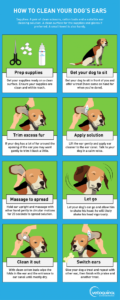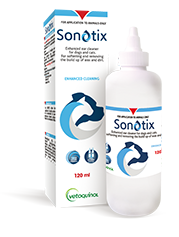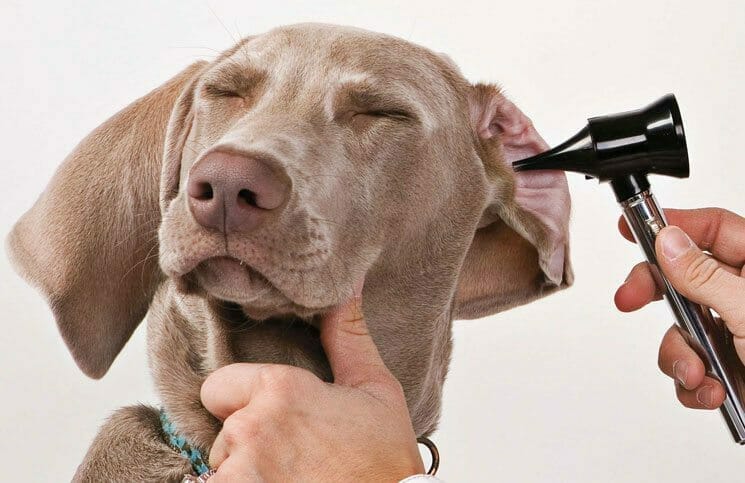
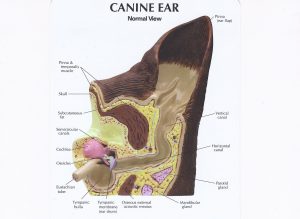
Of all the reasons a cat or dog requires a visit to the Veterinary Surgery, an ear problem is among the most common. Caring for a pet's ears does not need to be complicated, but they are not the same as a human ear and do require a little bit of TLC.
Their deep, curved ear canals make it difficult for air to get in and moisture to get out and moisture retained in the ear after swimming or bathing can often lead to infections. Spring and summer when it is hot and particularly when it is humid is the worst time of the year for ear infections. Not only are ear infections likely to occur but quite often they are difficult to cure. In brisbane one of the most common underlying causes of ear problems is allergies, untreated it will lead to secondary complications. Bacterial infestation, fungal infestation, ear mites and foreign bodies such as grass seeds are the also common causes of ear irritations.
Ten Important signs of Ear problems
It is important to know what early signs might indicate an infection so treatment can be started.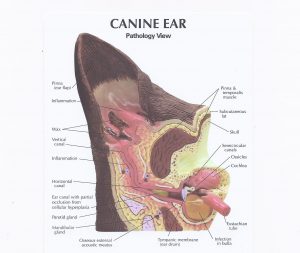
- Odour - bad odour coming from the ears
- Scratching at the ears
- Excessive discharge (usually yellow, brown or black)
- Inflammation - redness of the ear flap or canal
- Shaking the head or ears
- Obvious pain when touched around the head or ears
- Head tilted to one side or held down
- Stumbling or circling to one side
- Lethargy or depression
- Marked swelling of the ear flaps
If your dog or cat is showing any of these signs then a visit to the veterinarian is necessary, as there is a high likelihood an ear problem is present.
What can you do?
The best way to prevent ear problems is to establish a regular ear care program aimed at preventing such problems from developing.
Keep ears dry. Ears should be dried thoroughly after bathing or swimming.
- Cleaning. A regular ear clean following your dog's bath using an alcohol-based ear cleaning solution such as Epi-Otic or Bayer Ear Cleaning solution will remove any dirt or wax buildup that may encourage infections. All of these cleaners are readily available over the counter at the surgery without consultation.
- Clipping/Plucking. It is important to clip or pluck the hair from around the ear canal. Dogs that do not shed hair such as Poodles, Schnauzers, Bichons, Labradoodles, Spoodles etc. often need to have hair plucked from the canals. This allows better air flow into the canal and prevents wax from being trapped thus reducing the chance an infection will develop.
- Controlling skin disease. Many ear infections are simply a continuation of a generalized skin condition such as bacterial or fungal infection. When this happens it is impossible to treat the ear infection without controlling the skin disease.
How to clean ears
Below is a general image on how to clean a dogs ears. We have a range of cleaning products available. One of which is a new product from Vetoquinol called Sonotix.
